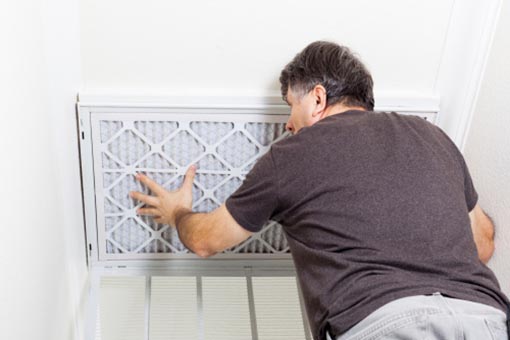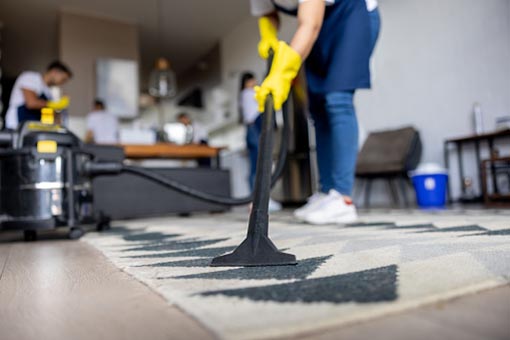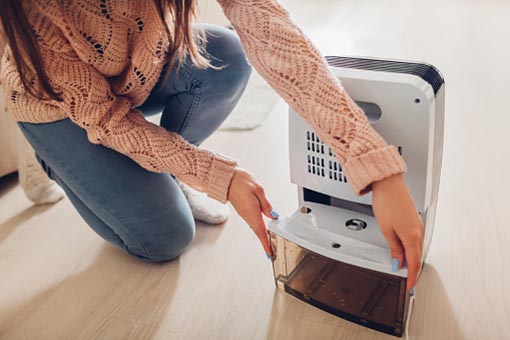HVAC Expert Shares Top Indoor Air Quality Mistakes Homeowners Make
Expert Covers Indoor Air Quality Do’s and Don’ts
No matter the season, homeowners often tinker with their thermostat settings for year-round comfort. When the weather is mild during spring or fall, many homeowners prefer to open their windows and rely on their HVAC system less. At the same time, summer and winter may cause trouble for indoor air quality (IAQ) because the more extreme temperatures require keeping the home sealed from the outdoors—to retain the air conditioning during summer and the heating in winter.
You’ll have an easier time securing good indoor air quality if you don’t make common mistakes homeowners can fall into. Rob's Albertan Service Experts Chief Operating Officer Cary Reed discussed these errors and what you can do to avoid them.
Not Changing Air Filters Consistently Enough

Changing your air filters helps cut down on the most common airborne pollutants hiding in your home. For anyone with allergies, neglecting to change air filters regularly could exacerbate sneezing, watery eyes or even require trips to the doctor. To ensure you’re employing the right filter for your specific system and situation, become familiar with the Minimum Efficiency Reporting Value ratings system, commonly known as MERV, Reed recommended.
“It’s based on a 1 to 20 scale, and ratings in the center of that range tend to be better home filters,” Reed said. “And, if you struggle to stay on top of filter replacement, I’d consider scheduling duct cleaning service too. After that, set up a system that reminds you when it’s time to swap out your air filter”
Ignoring HVAC Maintenance
Overlooking preventive HVAC maintenance is usually homeowners’ first step toward jeopardizing your indoor air quality, Reed added. An annual checkup for your HVAC system helps it continues to deliver comfort effectively and helps to lower the risk of needing major repairs in the future. In addition to checking all of the electrical components and the refrigerant supply, tune-ups involve cleaning coils and heating elements that air passes through before making its way through vents into your home. As long as your HVAC system isn’t running correctly, dust or moisture can build up and it may become the starting point for pollutants making it indoors.
Buying Products that Contaminate the Air Unknowingly

Some homeowners may be shocked to find out that some everyday products could be compromising their home’s air quality and even their health. There are three ways in particular that homeowners could be impacting their indoor air quality without realizing. The first is by using harsh cleaners that give off fumes and substances known as volatile organic compounds (VOCs). With so many alternatives available, opt for an eco-friendly cleaner instead, Reed suggested.
“Strongly scented candles are also a common air contaminant,” Reed said. “Even if you really prefer to have candles in the home, this is it isn’t the best idea for air quality. I even warn homeowners against using many air fresheners.”
Another way people contaminate their home’s air quality unintentionally is with indoor plants that may trigger allergy symptoms. The Ogren Plant Allergy Scale (OPALS) is a basic 1 to 10 scale that is often utilized to determine a plant’s potential for worsening symptoms for allergy sufferers.
“There are some varieties that are considered great indoor plants like ferns, ivy, fig and yuccas, but these plants can also trigger allergy symptoms. It’s always smart to look into it before selecting indoor plants,” Reed said.
Neglecting Mold and Moisture Problems

Too much humidity in a home can encourage mold and bacteria growth, which in turn may compromise indoor air quality. If you notice a plumbing leak and water is accumulating in the walls or another area of your home, repair it as quickly as possible, Reed insisted. Humid, musty air is often when the growth of mold starts, particularly when you reside in a warmer part of the country.
When you notice a musty smell coming from somewhere, that’s a sign that moisture is trapped somewhere. Some homes also encounter issues with either too much or too little moisture in the air, which usually means balancing humidity levels with a humidifier or dehumidifier, Reed added.
Not Opening the Windows When Practical
While it’s certainly more tough to crack open the windows right in the middle of a cold snap, there is still much of the year when cracking open a few windows and letting in fresh air is helpful. Not only does it refresh in-home air quality overall, but it can even reduce radon levels. This radioactive gas is naturally released from soil. In fact, installing a basic detector to monitor gas levels is a valuable investment, considering high radon exposure is responsible for roughly 21,000 lung cancer deaths annually, as reported by the CDC.
To get fresh air into your home when it’s cold outside, take advantage of midday temperature highs to slightly open the windows in rooms and other spaces. During summer, open them first thing in the morning when it’s cooler to refresh your home’s stagnant air with fresh air from outdoors, Reed suggested.
Not Taking Advantage of Technology and Services that Can Last
Whether your home has “problem air” thanks to excessive humidity levels, mold, viruses and other airborne particles, there are many solutions available, explained the HVAC pro.
One option includes installing germicidal UV light lamps, placing one inside your HVAC system to kill bacteria, viruses and other microbes within seconds. Other homeowners benefit most from ventilation systems that replace stagnant indoor air for fresh air, or whole-home air purifiers that can assure you enjoy a constant flow of fresh, clean air all year.
“An air quality professional can also run tests to help you fully understand the depth of the problem,” Reed said. “Just as you should keep up with HVAC system maintenance, ignoring these problems only makes them more frustrating to resolve in the future. Fortunately, there are many ways to address air quality concerns.”
To learn more about how to reach peak indoor air quality, visit ServiceExperts.com/indoor-air-quality or schedule your HVAC maintenance right away.

